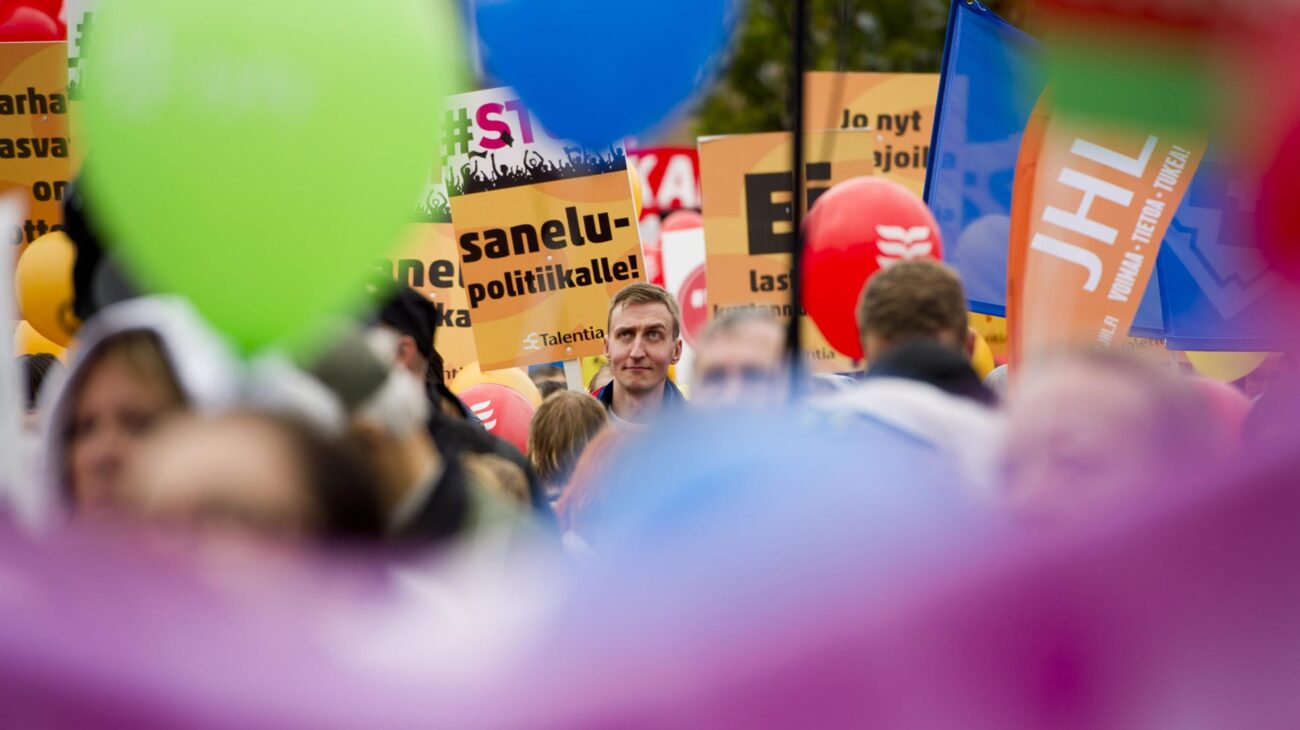
Members of Finnish trade unions demonstrated in Helsinki in September 2015. Photo: Markku Ulander / Lehtikuva
Trade unions are an important part of the success of Finland
Finland celebrated its 100 years of independence on 6 December 2017. The country has moved a long way from being a poor agrarian country to a modern industrial welfare state. And the trade union movement has played a decisive role and been an integral part in bringing about this transformation.
The first trade unions were formed at the end of 19th century. The general strike in 1905 opened the way for democratic reforms in Finland, which at that time was an autonomous part of Russia.
The first trade union confederation was established in 1907. In that same year Finland experienced the most radical parliamentary reform of its time in the world: a new unicameral Parliament was elected by universal suffrage.
Women in Finland were granted full rights to vote and stand for elections, the first country in the world to enjoy what is now largely taken for granted in democratic countries. In the 1907 elections 19 members of Parliament out of 200 were women.
Among them were several workers and trade union activists. The youngest MP in 1907 was a 25 year old weaver Jenny Nuotio.
In 1916 there was 940 worker’s houses – known as people’s houses in many other countries – in Finland, these exceeded the number of churches. In 1917 Finland elected the first Social Democrat Prime Minister in the world, Oskari Tokoi.
But after a bitter civil war in 1918 – which was fought largely along class lines and won by the nationalist Whites – until the end of the second world war the Finnish trade unions found themselves in a relatively weak position and suffered under repressive legislation.
In November 1939 the Soviet Union attacked Finland beginning so called Winter War. The seriousness of the situation finally forced employers to accept negotiations with the trade unions. During the three-month-long war – in January 1940 – the employers accepted the right of trade unions to organise and negotiate.
In 1944, when Finland accepted peace terms after a second war with the Soviet Union, the trade unions were set free and membership reached record highs. The work towards collective agreements, high organising density, improved occupational health protection and unemployment protection could now begin to take effect.
The Nordic Model
Today, Finland is a country which excels in many international comparisons. According to the Fragile States Index 2017 Finland is the most stable country in the world.
According to the World Economic Forum Finland’s judicial system is the most independent in the world, Finland is the safest country in the world and Finland’s primary education is the best in the world.
According to Freedom House Finland is the freest country in the world along with Sweden and Norway. Finland has also been year after year credited with top positions in indexes for press freedom and the least corruption.
It is very clear that the strong input of trade unions has had a major influence in reducing poverty and improving gender equality.
Finland is one of the five Nordic countries, which are often viewed as being quite similar. Together with Iceland, Norway, Sweden and Denmark it has a high trade union density and a functioning labour market negotiating system.
According to the OECD in 2016 the trade union density was 64.6 per cent in Finland and collective bargaining coverage in 2015 was 89.3 per cent. Finland has generally binding collective agreements in most sectors of the economy.
The Finnish Labour Museum Werstas in Tampere opened a new exhibition called the Museum of Freedom in November. It tells the history of Finland from the point of view of freedom and how the labour movement has been actively working to remove various obstacles to freedom in daily life.
Trade unions have been working actively to create and defend such achievements like eight-hour working days, sick leave pay, parental leave, earnings-related unemployment security and a fair pension system. This work continues every day
Heikki Jokinen